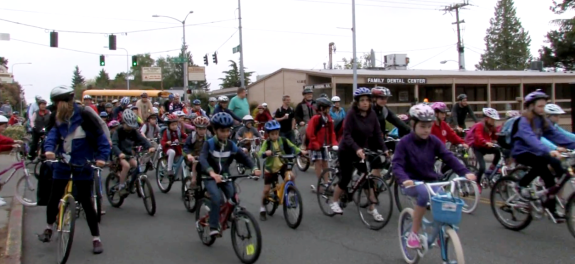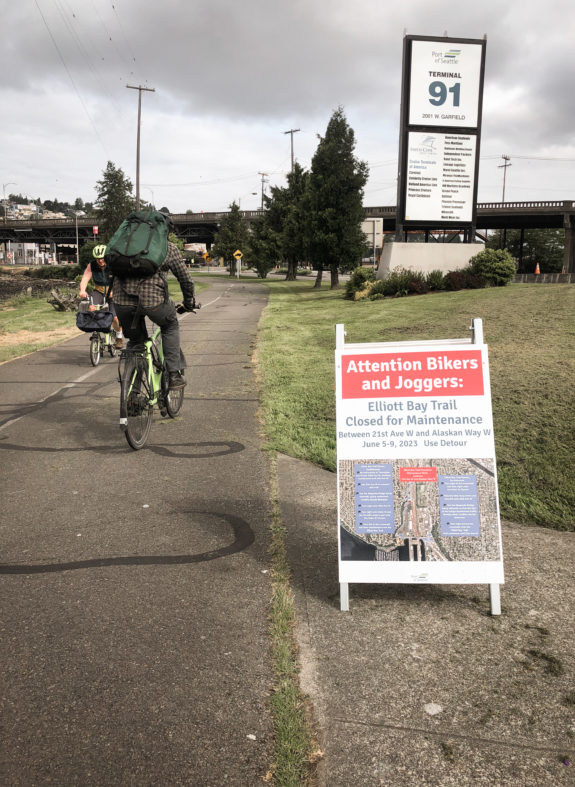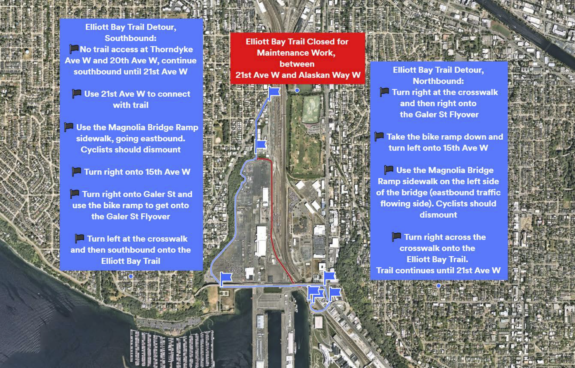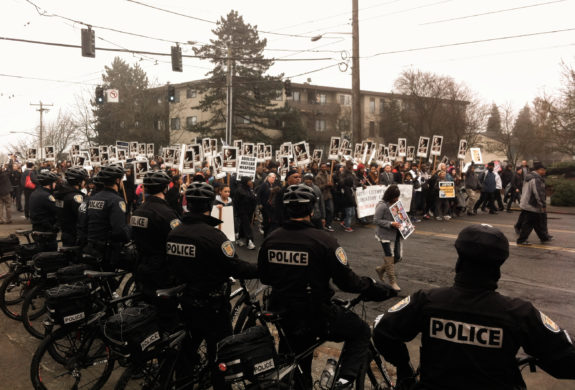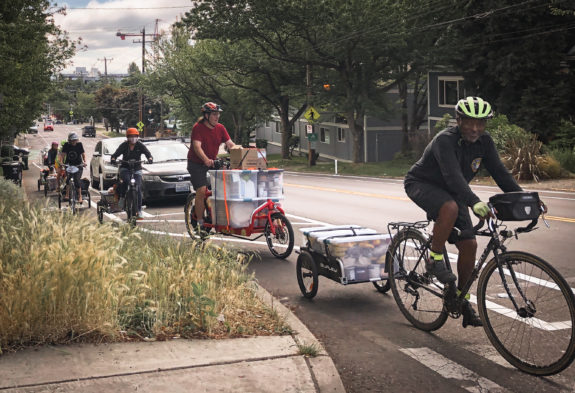
Seattle Bike Blog has been cheering on the Pedaling Relief Project since it first started as a “disaster relief” effort to help food banks handle the tumultuous period when the COVID-19 pandemic began. With many people suddenly out of a job and social distancing requirements complicating the usual methods for distribution, food banks had to scramble to not only meet demand but also invent new ways of getting food to the community.
Since then, PRP has grown substantially and is now a year-round fixture at many food banks around the area. And as Cascade Bicycle Club noted in a recent blog post, the project is nearing an incredible milestone: 1 million pounds of donations all hauled by bike. A million pounds! That sounds like a number you would make up if you were exaggerating. It’s equal to about 100 elephants or 5 fully-loaded 737 Max airliners or 10 average American houses or 1 cumulus cloud.
It gets truly humbling when you take a step back, though. In a time when our society’s most selfish assholes and grifters are given the disproportionate share of public attention they crave, food bank operators and volunteers (whether working inside or on their bikes) have been innovating on the fly to actually help people and make their communities stronger and healthier. They have developed a reliable, efficient, expandable and emission-free logistics system capable of moving a million pounds of necessary goods. And they didn’t require any new tech. Bicycles, simple trailers and teamwork is all it took. Well, and a lot of organizing by Maxwell Burton.
Each location’s PRP group is always welcoming of new riders, making it a great way for people to get involved in their community and meet some other wonderful volunteers. It’s also really fun. You don’t need a trailer or cargo bike to participate. Learn more and sign up on the PRP weekly volunteer page. Here’s a video from a recent Food Not Bombs food rescue ride:
(more…)
